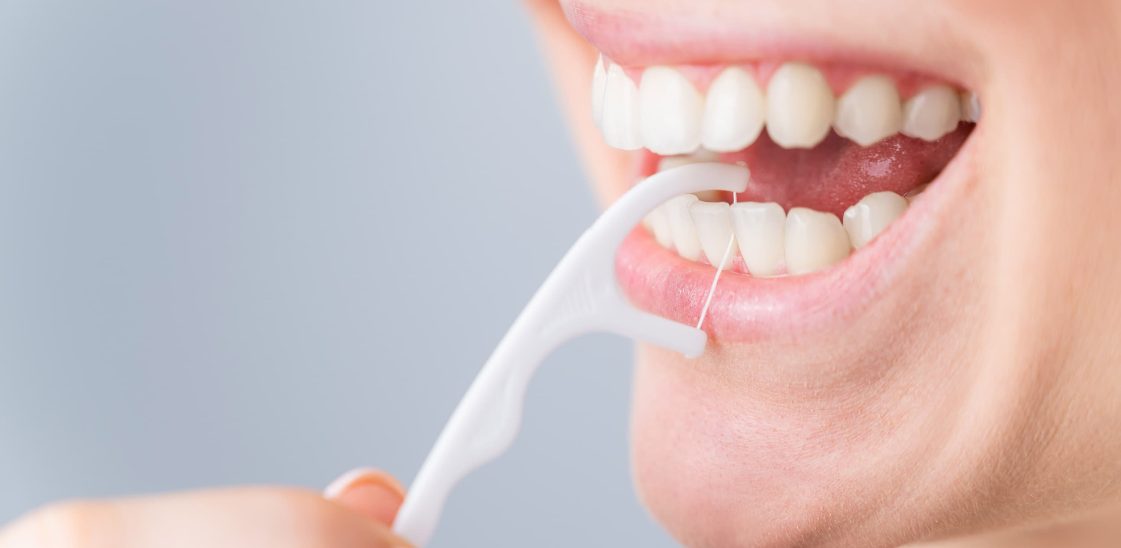
Are dental floss picks reusable?
One consideration that many people take into account when looking for dental hygiene products is sustainability – whether that’s because of environmental concerns or wanting to make the most of your money with items that can be used more than once.
Knowing the limits when it comes to reusing items for oral care is not just a matter of sustainability, though. You also need to think about the physical integrity of the product, as well as whether or not it’s hygienic to use it again and again. Below, we discuss everything you need to know.
Can floss picks be reused?
The first and most important thing to be aware of is that using floss picks to clean the areas of your teeth that your toothbrush cannot reach is a pillar of good dental hygiene.[1] In fact, toothbrushes are thought to clean only 60% of your teeth. But the exact degree of how much more effective using a floss pick is compared to brushing alone can depend in part on how you use them.
One factor that can have an impact on efficacy is how often you reuse floss picks – and this is where opinions can vary. For example, some people may prefer to reuse floss picks as many times as possible in order to save money and need to buy them less frequently.
On the other hand, hygiene concerns can mean that some people may reject the idea of reusing a floss pick at all, resulting in using a new pick for every tooth. Many people sit somewhere in between. But is there any scientific evidence to help us understand how many times we should be reusing floss picks?
How many times can you reuse a floss pick?
The general advice on when to replace your interdental cleaner – whether it’s a floss pick or interdental brush – is to do so when it starts to show signs of wear. For floss picks like Dentek Eco Triple Clean Picks, which feature extra textured floss, you can use the pick multiple times before the floss starts to fray, meaning you can get more use out of each floss pick.[2]
In most cases, this means you can use a single pick to clean multiple spaces between your teeth. However, this can vary greatly depending on a number of factors, such as the current state of your dental health and your flossing technique.
For example, some people might choose to rinse the floss in between use on separate teeth. While this isn’t likely to have a significant effect on bacterial growth, it could help to avoid spreading plaque or food particles from tooth to tooth. It may also help the pick to feel ‘cleaner’.
Alternatively, if you have a more vigorous flossing technique, or your teeth have very small gaps between them, it’s possible that this could cause the floss to wear out quicker. Your dentist may be able to provide you with flossing tips and techniques to try if this is a problem – or they may recommend other interdental cleaners that might be better suited to your needs.
Typically, a single floss pick is unlikely to last long enough to floss your whole mouth before the floss begins to fray, just like how you wouldn’t be able to use a single stretch of roll floss for all your teeth. Ultimately, research has yet to provide us with a more definitive answer to go by, so you should be led by your dentist’s advice and your own preferences.
Heading off on holiday or a business trip? Remember that you’ll need more than one floss pick to clean your teeth well – and more depending on how long your stay is. Fortunately, you can keep your picks in the best possible condition with a travel case like the Dentek on-the-go pick cases, which hold up to six picks per case to protect them from germs and prevent the growth of bacteria.
At the end of the day, how many floss picks you need to clean between all your teeth can vary depending on your technique and personal preferences. When in doubt, err on the side of caution and stock up with quality floss picks to keep your mouth clean and hygienic.
Resources
[1] – https://www.nhs.uk/live-well/healthy-teeth-and-gums/how-to-keep-your-teeth-clean/
[2] – https://www.ada.org/resources/ada-library/oral-health-topics/floss




